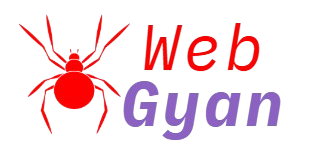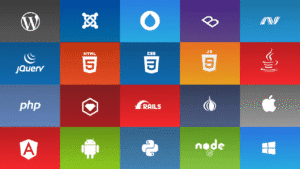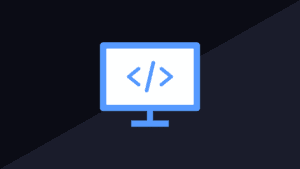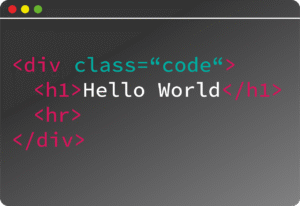
Unlocking the Power of Progressive Web Apps: The Future of Mobile and Web Experiences
Introduction
More people than ever use their phones and tablets to surf the web. Businesses want quick, reliable apps to keep users happy and engaged. That’s where Progressive Web Apps, or PWAs, come in. They blend the best parts of websites and native apps into one simple, powerful solution. PWAs not only offer a better experience for users but also save costs and boost engagement. In this article, we’ll explore what PWAs are, how they work, and why they matter now more than ever.
What Are Progressive Web Apps?
Definition and Key Concepts
Progressive Web Apps are websites built with new tools that let them act like mobile apps. They load fast, work offline, and can be added to your home screen just like an app. They use modern web tech like Service Workers, Web App Manifests, and HTTPS to make this happen. The idea? Make a website that feels like an app—quick, smooth, and reliable—without needing to download from an app store.
Evolution and History
Web apps have been around for a while, but they used to be slow and clunky. Over time, developers added features like offline access and push notifications. Major browser updates and standards paved the way for what we now call PWAs. Today, many companies aim for their web apps to deliver an experience nearly as good as native apps, leading to a shift toward this new way of building digital tools.
Why PWAs Matter in Today’s Digital Landscape
More people access the web on mobile devices than desktops now. Traditional apps often don’t work well on all devices and can be expensive to build. Users expect fast, reliable, and engaging web experiences—especially in places with slow internet. PWAs meet this demand by working offline, loading quickly, and being easy to install. They help businesses reach more people, improve satisfaction, and stay competitive.
Core Features of Progressive Web Apps
Responsive and Mobile-First Design
PWAs are built to look and work great on all devices—phones, tablets, or desktops. They adapt their layout automatically to fit any screen size. This makes sure your website feels natural wherever it’s viewed. Many popular PWAs, like Twitter Lite and Pinterest, do this well, offering a smooth experience on tiny screens or big monitors.
Offline Functionality
Thanks to Service Workers, PWAs can save parts of their content on your device. This means they continue to work even without an internet connection. For users, this means browsing news or shopping carts offline or viewing previously loaded pages. For businesses, it means keeping customers engaged even when the signal is weak.
App-Like Experience
PWAs look and feel like native apps. They open in full-screen mode, show splash screens, and let you navigate smoothly. Features like home screen icons make them easy to find and launch. This gives users a familiar, seamless experience that encourages them to stay longer.
Installability and Home Screen Integration
Adding a PWA is simple—just tap a button, and it appears on your home screen. It behaves like a regular app, with its own icon and launch screen. Businesses see better user retention when their PWA is easy to find and use, replacing the need to download an app from an app store.
Push Notifications and User Engagement
PWAs can send notifications directly to users, even when they aren’t browsing. This is perfect for updates, offers, or reminders. Used properly, push notifications can bring users back to your site and drive more conversions.
Secure Context
PWAs require HTTPS, which encrypts the data between your device and the web server. This keeps your information private and builds trust. Plus, Google favors secure sites in search rankings, which can boost your visibility.
Development and Deployment of PWAs
Building a PWA: Technologies and Tools
Most PWAs are built using popular JavaScript frameworks like React, Angular, or Vue.js. Developers add Service Worker scripts for offline work and create a Web App Manifest file that defines how the app looks and behaves. Following best practices ensures your PWA runs fast and reliably across browsers.
Testing and Optimization
Tools like Google’s Lighthouse and Chrome DevTools help test your PWA’s speed, offline capabilities, accessibility, and more. Regular testing helps you spot issues early, improve load times, and keep users happy.
Deployment Considerations
Hosting your PWA on HTTPS with a CDN (Content Delivery Network) guarantees fast, secure access worldwide. Cross-browser support is crucial—test your app on Chrome, Firefox, Safari, and Edge to ensure everyone gets the same experience.
Cost and Time Investment
Compared to native app development, PWAs are faster and cheaper to build. You can deploy updates instantly, and maintenance is simpler. This allows businesses to experiment or roll out features quickly without breaking the bank.
Benefits and Business Advantages of PWAs
Enhanced User Experience
Fast load times, offline access, and smooth navigation keep users happy. When a site feels quick and reliable, visitors stay longer, explore more pages, and return often.
Cost-Effectiveness
Building a PWA costs less than creating and maintaining multiple native apps. You only need one version that works across all platforms. Updating the app is quick and straightforward, saving both time and money.
Better Conversion Rates
Features like push notifications and quick load times boost user engagement. Many companies report seeing more sign-ups, sales, or repeat visits after switching to PWAs.
SEO and Discoverability
PWAs are websites, so they can be indexed by search engines. This means more organic traffic from people searching for your products or services. Improving your SEO strategy with a PWA can lead to higher visibility.
Accessibility and Reach
Because PWAs work on all devices and don’t require store downloads, they reach a wider audience. They also perform well on low-end phones and slow networks, making the internet accessible for everyone.
Real-World Examples of Successful PWAs
Starbucks PWA
Starbucks replaced their native app with a PWA. It loads twice as fast and works on almost any device. As a result, they saw a big increase in orders and engagement. Customers love how quick and easy it is to browse and buy.
Pinterest PWA
Pinterest’s PWA improved page load speed and made browsing smoother. They saw more user sessions and increased pins saved. This shows how a simple app can make a huge difference in user retention.
Twitter Lite
Twitter’s lightweight PWA uses less data, loads rapidly, and works offline. It became especially popular in emerging markets where internet speeds are slow. Twitter saw higher sign-up rates and more frequent use.
Other Notables
Flipkart, Alibaba, and Lancôme have all adopted PWAs. Each reports increased sales, faster browsing, and better customer satisfaction.
Challenges and Limitations of PWAs
Browser Compatibility
Not all browsers support every PWA feature equally. Safari, for instance, has limited offline support or push notifications. Testing across browsers is essential to fix inconsistencies.
Hardware and Functionality Limits
PWAs can’t access all device features like certain sensors or native hardware. For example, complex camera or Bluetooth integrations may still need native code. Future updates may improve this gap.
Discoverability and User Awareness
Many users aren’t familiar with PWAs. Educating them or promoting your app is key to driving installs and engagement. Clear messaging and marketing help this process.
Technical Constraints
Some advanced features, like background tasks or advanced device interactions, are tricky to implement in PWAs. Hybrid approaches or native modules may be needed in specific cases.
The Future of Progressive Web Apps
Emerging Technologies and Trends
PWAs are already integrating with Internet of Things (IoT), AI, and augmented reality (AR). These trends will bring even richer experiences to users and businesses alike. Browser support continues to improve, making PWAs more capable.
Industry Adoption and Predictions
More companies are choosing PWAs over native apps for cost savings and flexibility. Experts forecast steady growth in PWA adoption across industries such as retail, entertainment, and banking.
How Businesses Can Prepare
Start planning how PWA technology fits into your strategy. Upskill your development team or hire experts in modern web tech. Testing and iterating on your PWA will keep you ahead of the curve.
Conclusion
PWAs hold the power to change how we experience the web. They provide fast, reliable, and engaging user experiences without the fuss of app stores. For businesses, this means happier users, better SEO, and lower costs. Adopting a PWA can give you an edge in a world that demands mobile-friendly, instant access. If you haven’t yet, explore implementing PWAs to stay competitive and grow your presence in the digital world. The future is bright, simple, and just a click away.



































































































